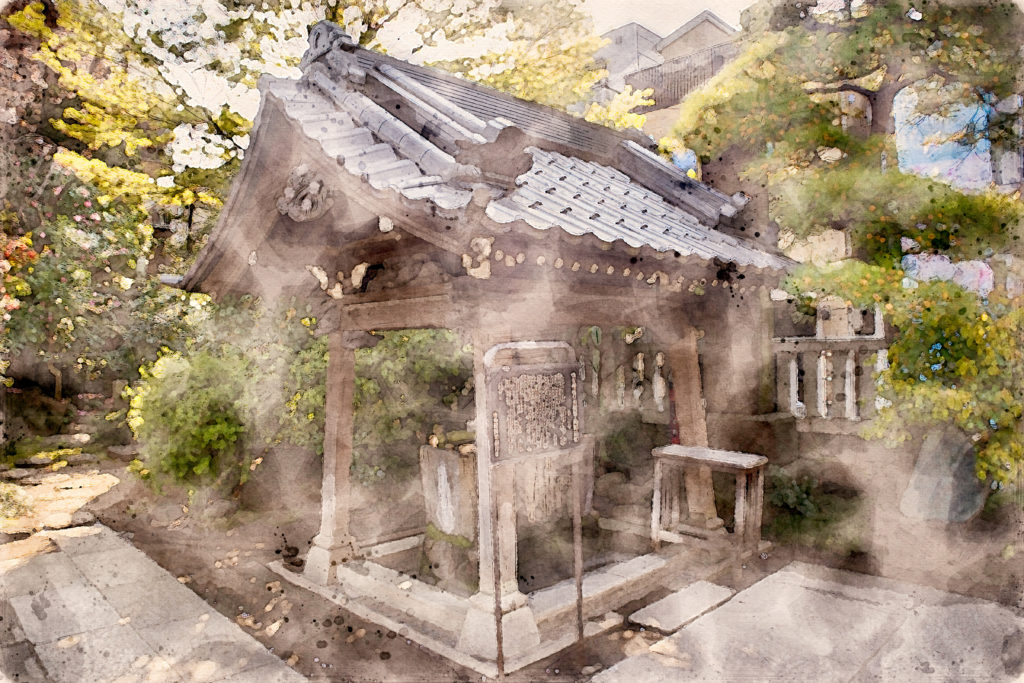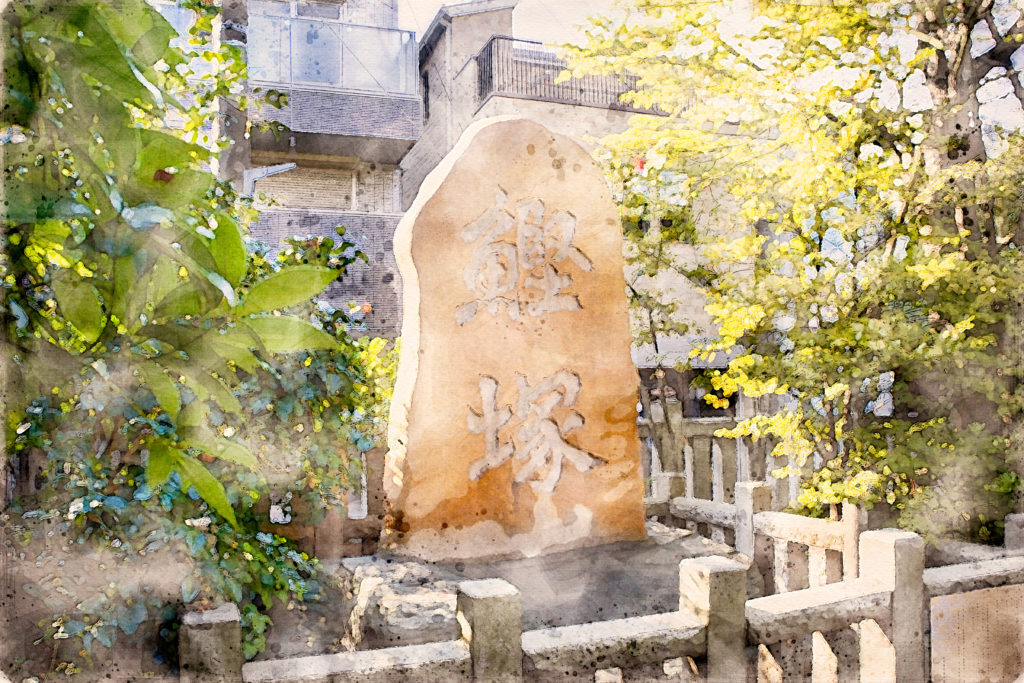The “Shrines and Temples” category of the Tokyo Shitamachi Guide presents Shinto shrines and Buddhist temples in Tokyo’s Shitamachi area, which is the area along and east of the Sumida River.
Each time, we recommend an engaging location for your sightseeing experience in Tokyo. In this article, we will focus on Sumiyoshi Shrine, a Shinto shrine in Tsukuda, Chuo Ward.
Sumiyoshi Shrine is a Shinto shrine built on an artificial island located downstream of the Sumida River. For more than 400 years, this shrine has protected the fishermen and shipping enterprises in Edo Bay, which is now known as Tokyo Bay.
In the late 19th century, the island underwent further development and expansion. Today, Tsukishima, which is famous for its “Monja Street”, is in the neighborhood of this shrine. You can also walk to Tsukiji Market from this shrine.
This article will provide clear and easy-to-understand information on various topics related to Sumiyoshi Shrine, including:
- Historical background
- Enshrined deities
- Highlights
- Transportation options
- etc.
Reading this article will help you gain a better understanding of Sumiyoshi Shrine. You can use it as a reference when you visit the shrine.
This article is also available in Japanese. You can access it at the following link:
History

According to Sumiyoshi Shrine, its origin dates back to the 3rd century. In addition, both Empress Jingu and Tokugawa Ieyasu are deeply involved in its history.
Empress Jingu was a member of the imperial family and lived from 170 to 269. She was married to Emperor Chuai, the 14th Emperor of Japan.
Tokugawa Ieyasu, a military commander who lived from 1554 to 1616, played a crucial role in the establishment of the Edo Shogunate, also known as the Tokugawa Shogunate, in 1603.
In 200, Empress Jingu received a prophecy from the Sumiyoshi Sanjin. The Sumiyoshi Sanjin refers to the three Shinto deities who appeared during Izanagi‘s purification ritual in the sea after his return from the realm of death.
In their prophecy, the Sumiyoshi Sanjin instructed, “Engage in battle against Silla,” referring to a former country on the Korean Peninsula. They further advised, “Enshrine us, and you will achieve victory in the war.”
Following the prophecy, Empress Jingu sent her troops to the Korean Peninsula. As a result, she gained control not only over Silla but also over Goguryeo and Baekje.
On the way back from the Korean Peninsula, Empress Jingu stopped by Taminoshima Island, where present-day Tsukuda is in Osaka City.
Empress Jingu celebrated her victory on Taminoshima Island and enshrined the Sumiyoshi Sanjin there. This is the beginning of Taminoshima Sumiyoshi Shrine, which is now known as Tamino Shrine.
In 1586, Tokugawa Ieyasu visited Taminoshima Sumiyoshi Shrine. During his visit, the fishermen of Taminoshima Island and neighboring Owada Village generously provided a ferry to transport Tokugawa Ieyasu and his entourage.
Following his visit, Tokugawa Ieyasu developed a strong bond with the fishermen of Taminoshima Island and Owada Village. As a part of his support for the island’s development, Taminoshima Island was renamed Tsukuda Village.
In 1590, Tokugawa Ieyasu relocated his headquarters to Edo, present-day Tokyo. After some time, he invited the fishermen of Tsukuda and Owada villages, as well as the Shinto priest from Taminoshima Sumiyoshi Shrine, to Edo. During this period, they were granted a tidal flat area located downstream of the Sumida River.
Between 1624 and 1645, they constructed an artificial island in the tidal flat area. They named the island Tsukudajima Island after their hometown, Tsukuda Village.
In 1646, the residents of Tsukudajima Island built a Shinto shrine on the island, following Taminoshima Sumiyoshi Shrine. This shrine was dedicated to Sumiyoshi Sanjin, Empress Jingu, and Tokugawa Ieyasu. This is the Sumiyoshi Shrine in Tsukuda, which we are discussing in this article.
Enshrined Deities
The Sumiyoshi Sanjin
Sumiyoshi Shrine dedicates itself to the Sumiyoshi Sanjin as its principal deity.
The Sumiyoshi Sanjin consists of three Shinto deities who played a significant role in inspiring Empress Jingu’s decision to dispatch her troops to the Korean Peninsula. These deities are:
- Sokotsutsu no O no Mikoto
- Nakatsutsu no O no Mikoto
- Uwatsutsu no O no Mikoto
According to Japanese mythology, the Sumiyoshi Sanjin has a deep connection with Izanagi and Izanami. Izanagi and Izanami were married deities who gave birth to the islands and deities of Japan.
Izanami, the wife, suffered severe burns while giving birth to Kagutsuchi, the deity of fire. As a result, she passed away and went to the realm of death.
Izanagi, the husband, went to the realm of death to bring his wife back, but Izanagi and Izanami got divorced in the end.
Following their separation, Izanagi performed a ritual in the sea to purify himself from the impurities of the realm of death. It was during this purification ritual that the Sumiyoshi Sanjin appeared from the sea.
The Sumiyoshi Sanjin is the Shinto deity of purification and the sea. The blessings associated with this deity include:
- Maritime safety
- Abundant catch
- Business prosperity
- Household safety
- etc.
Okinaga-Tarashi-Hime
Sumiyoshi Shrine also enshrines Okinaga-Tarashi-Hime, who is the deification of Empress Jingu.
Okinaga-Tarashi-Hime is a deity associated with war and childbearing. The blessings associated with this deity include:
- Safe delivery
- Being pregnant
- Nurturing and caring for children
- Household safety
- Favorable outcomes in warfare
- etc.
Azuma-Terumioya
Sumiyoshi Shrine also enshrines Azuma-Terumioya. This Shinto deity is the deification of Tokugawa Ieyasu, who founded the Tokugawa Shogunate. And Azuma-Terumioya is also known as Toshogu and Tosho Daigongen.
Azuma-Terumioya is a Shinto deity dedicated to safeguarding the nation from disasters. The blessings associated with this deity include:
- Flourishing career
- Business prosperity
- Household safety
- Wish fulfillment
- etc.
Highlights
The Two Torii Gates

Sumiyoshi Shrine has two Torii gates.
The first Torii gate is located along the Sumida River. You can see this gate from the opposite bank of the river. If you have the opportunity, I recommend taking a moment to observe it.
Furthermore, the path leading from the first Torii gate to the shrine is an alley that represents the traditional Shitamachi area of Tokyo. On both sides of the alley, you’ll find old-fashioned private houses, allowing you to immerse yourself in the atmosphere of Tokyo’s Shitamachi area.

The second Torii gate at Sumiyoshi Shrine has a unique feature: the plaque. In Shinto shrines, a plaque is typically placed at the top of the Torii gate, displaying the name of the shrine.
Plaques at Shinto shrines are usually made of wood or stone. But one at Sumiyoshi Shrine is ceramic. And Prince Arisugawa Takahito wrote the shrine name on it.
Prince Arisugawa Takahito was a member of the Imperial family during the late 19th century and was renowned for his skills in calligraphy.
In 1990, the plaque on the second Torii gate of Sumiyoshi Shrine was designated as a cultural property of Chuo Ward, recognizing its historical value.
Suibansha

You can find a facility called Suibansha next to the first Torii gate of Sumiyoshi Shrine. This facility is to purify your hands and mouth before worshipping.
Suibansha consists of the water basin and a small house for the water basin. The water basin was dedicated to the shrine in 1841, and the house was built in 1869. At the house, there are relief carvings of how life on Tsukudajima Island used to be.
In 1990, Suibansha of Sumiyoshi Shrine was designated as a cultural property of Chuo Ward, recognizing its historical value.
Katsuo-Zuka

Katsuo-Zuka is a stone mound behind the Suibansha. Katsuo means bonito, and Zuka means a mound in English. This mound was dedicated to the shrine in 1953 to pray for an abundant catch of bonito and to console bonito’s spirits.
The Eight Lucky Gods of Tokyo Shitamachi
Sumiyoshi Shrine is regarded as one of the Eight Lucky Gods of Tokyo Shitamachi, which refers to eight Shinto shrines in Chuo Ward and Taito Ward.
Each shrine of the Eight Lucky Gods of Tokyo Shitamachi claims a different blessing. The blessing of Sumiyoshi Shrine is “Traffic Safety.”
The concept of the Eight Lucky Gods of Tokyo Shitamachi was introduced in 1981 as a part of the regional revitalization projects in Tokyo. You can enjoy historic sites and feel the atmosphere of the Shitamachi area of Tokyo while you are making your pilgrimage.
For more information about the Eight Lucky Gods of Tokyo Shitamachi, please refer to the following article:
Other Useful Information
Opening Hours
- From 8 a.m. to 4:30 p.m. (the shrine office)
TEL
- 03-3531-3500
Address
- Tsukuda 1-4-14, Chuo-ku, Tokyo 104-0051
Google Map
Public Transport (Train)
- 5-minute walk from Tsukishima Station (Exit 6) on the Yurakucho Line
- 5-minute walk from Tsukishima Station (Exit 6) on the Oedo Line
Public Transport (Toei Bus)
- 5-minute walk from Tsukuda 2-Chome Stop on Route 東 16 (Higashi 16)
- 6-minute walk from Tsukishima Eki-Mae Stop on Route 東 16 (Higashi 16)
Public Restroom Availability
- Not confirmed. There is a public restroom near the Tsukuda-Kobashi Bridge.


